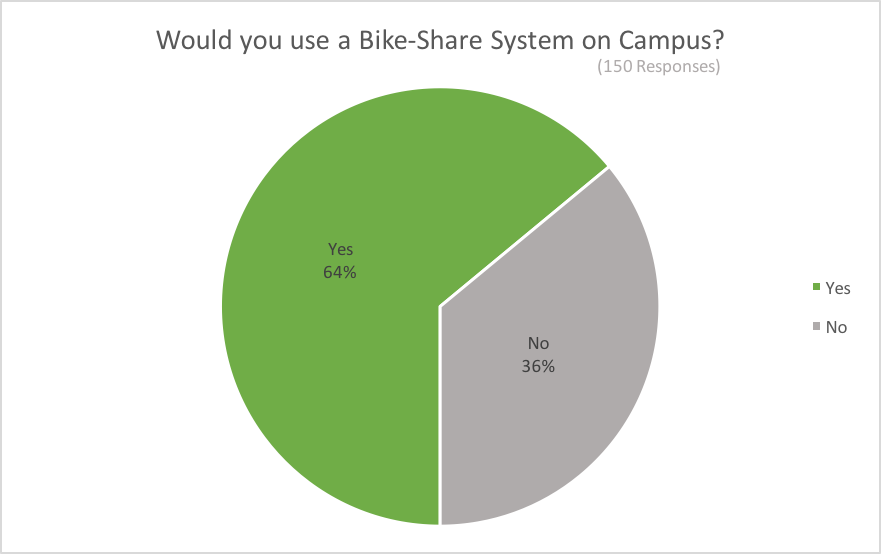Infrastructure and Demand
The last official Lafayette College Master Plan, published in 2009, states the following in regards to biking on campus:
Bicycle use was considered by the planning team as one component of an overall Transportation Demand Management (TDM) program. TDM is an effort to limit the number of vehicles on campus through incentivizing measures such as carpooling, biking, and walking. The campus has no formal TDM program, but the College does support a relatively strong ethos of environmental awareness and sustainability within its community. As changes proposed in the Master Plan are implemented, the College should continue to reassess opportunities to encourage biking (32).
As shown by the Lafayette’s official statement, key administrators recognize the benefits of increasing bicycle use on campus. So much so in fact, that one of the images in the report, featured below, depicts the removal of roads and the substitution of paths. Additionally, a bicyclist is pictured directly in the front of the rendering, showing the College’s future interest in biking as a main method of transportation. However, it is unfortunate that the master plan does say that Lafayette does not actually have a sustainable Transportation Demand Management program. On the other hand, successful implementation of any system arguably hinges solely on two factors: infrastructure and demand. Lafayette, at this point, now has both the infrastructure and the demand to successfully implement a bike-share system.

Demand is again the second factor for successful implementation of a system. As seen on the figure below, a survey done in Lafayette College showed that over two-thirds of respondents (which included students, faculty and staff) said that they would use a bike-share program if it was available. Reasons for possible use were cited as, “recreation,” “quick trips between buildings,” and “going to downtown Easton.”
There is substantial enthusiasm and a clear demand for a bike-share program on campus. To quote one student: “if we were going to donate $2,500 [on silly one-day event], I think we can get a bike share program…people will actually use it.” The student, and bike-share advocate, was referencing an impromptu initiative in which Lafayette College offered to give $2,500 for an event during Lafayette-Lehigh rivalry week. One thing for sure is clear, Lehigh (which already has a functioning bike-share system) is beating Lafayette in its sustainability practices. In the 2015 Fall semester, Lafayette College community members successfully led a sustainability rally demanding the college improves its sustainability efforts. A bike-share system would show the Lafayette community that its sustainability demands are being heard.
A bike-share system provides Lafayette College with a sustainable system that will be used by individuals. As seen on the graph below, community members plan on using a bike-share system in three main ways. As expected, running quick errands between academic buildings is the primary fashion individuals will use this system. An example may include a student or professor borrowing a bicycle to quickly move between buildings. In addition to running quick errands, 23% of respondents said they would primarily use the system as a means of recreation. For example, a sustainability club may host a bike tour of College Hill. Lastly, and surprisingly, over ten percent of respondents cited “going to Downtown Easton” as their primary reason for using a bike-share system. This is positive news as it shows that there will be reason to continue expanding the system by installing additional stations in Downtown Easton.
___________________________________________________________________
To navigate accross the page please use the following links:
• Bike-share Meets Lafayette
• The Team
• Defining the Scope
• Challenges and Mitigating Factors
• Solutions
• Conclusion
• Bibliography


